Our power of imagination project was an amazing project which just might have to do with the field school we went on for it …. Florida aka DISNEY WORLD! Our driving question: how do Disney theme parks shape and influence the cultural, economic, psychological, and social experiences of visitors?
Investigation 1
 This investigation was about building your knowledge that you would need to complete this project and storing it in a PKM. I found this first investigation the most infuriating. Researching, which involved reading articles as a class and watching videos like the “Happiness Advantage”, was very enjoyable. Also, learning about the culture of Disney was very interesting. Walt Disney’s mindset when created these theme parks was so different from other people of his time. What was infuriating? While reading articles and watching the videos we had to MAKE (not to be mistaken for TAKE) notes, which was expected. But then we had to write a summary. The 4 – 2 – 1 structure was challenging. I like the idea but I had a hard time finding the point I should get across in that amount of space. There was so much information and I seemed to include more than I needed. Concise writing is hard! Overall I liked when we found our own articles such as the PKM I made for Dole Whip. This whole investigation shows my growth on the processing curricular competency with critical thinking shown in the fleeting notes and the creative and reflective thinking shown in the connections I made and my thinking sections.
This investigation was about building your knowledge that you would need to complete this project and storing it in a PKM. I found this first investigation the most infuriating. Researching, which involved reading articles as a class and watching videos like the “Happiness Advantage”, was very enjoyable. Also, learning about the culture of Disney was very interesting. Walt Disney’s mindset when created these theme parks was so different from other people of his time. What was infuriating? While reading articles and watching the videos we had to MAKE (not to be mistaken for TAKE) notes, which was expected. But then we had to write a summary. The 4 – 2 – 1 structure was challenging. I like the idea but I had a hard time finding the point I should get across in that amount of space. There was so much information and I seemed to include more than I needed. Concise writing is hard! Overall I liked when we found our own articles such as the PKM I made for Dole Whip. This whole investigation shows my growth on the processing curricular competency with critical thinking shown in the fleeting notes and the creative and reflective thinking shown in the connections I made and my thinking sections.
Investigation 2
 Early on we were put into groups and assigned a specific aspect of our driving question. My group focused on how Disney theme parks formed emotional connections for the visitors of the park. For this investigation, as a group we had to come up with a pitch board for a 10 minute documentary. The pitch board had to include the main concept we wanted to get across and the mood we wanted the audience to feel. This part of the project involved a lot of growth in the decision making competency. Working as a group we had to look at our topic from different sides and figure out how to put it all together in the end. A challenge for us? The groups were made up of students from both classes. This made collaborating difficult. We did not understand what the other half of our group had done the class before us. Communication was not clear. Thankfully we used time in our other classes to bring it together but it was still difficult and it was a problem throughout this whole project.
Early on we were put into groups and assigned a specific aspect of our driving question. My group focused on how Disney theme parks formed emotional connections for the visitors of the park. For this investigation, as a group we had to come up with a pitch board for a 10 minute documentary. The pitch board had to include the main concept we wanted to get across and the mood we wanted the audience to feel. This part of the project involved a lot of growth in the decision making competency. Working as a group we had to look at our topic from different sides and figure out how to put it all together in the end. A challenge for us? The groups were made up of students from both classes. This made collaborating difficult. We did not understand what the other half of our group had done the class before us. Communication was not clear. Thankfully we used time in our other classes to bring it together but it was still difficult and it was a problem throughout this whole project.
Investigation 3
 It’s story board time! While working on our pitch board, we came up with a reliant idea. We decided that the main concept we wanted to get across was how the merchandise is a way to take Disney beyond the boundaries of the park. We would show the differences in the merchandise and how they remind you of a place or experiences in Disney. Group members would each introduce different merchandise. The other choice we made was that the overall mood will be up beat and we will interview someone who obviously loves the merchandise.
It’s story board time! While working on our pitch board, we came up with a reliant idea. We decided that the main concept we wanted to get across was how the merchandise is a way to take Disney beyond the boundaries of the park. We would show the differences in the merchandise and how they remind you of a place or experiences in Disney. Group members would each introduce different merchandise. The other choice we made was that the overall mood will be up beat and we will interview someone who obviously loves the merchandise.
Thinking back, I loved our idea and I wish our final product showed that more. Our idea evolved and that is ok but I loved our original idea. With the story board, we also created a script for our documentary. The collaboration was difficult because of the separate classrooms and we needed more time. When flights were cancelled the ONLY good thing was that we were able to finish our scripts and get better idea of when and where we would shoot and who would shoot what. I really enjoyed this part of the process because I could see the shape of what we were doing.
Shooting on location …. DISNEY WORLD!
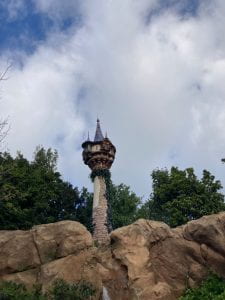
originally I was going to interview a Disney Customer, someone who loved the merchandise. But we decided to have the same voice interviewing both of our interviewees to keep some consistency. So, I instead, was in charge of B Role which meant whenever I was in a store I filmed the merchandise about the 50th anniversary merchandise. My other job, was to film Noah and Gwen when they talked about the custom and limited time merchandise. I helped them film this at multiple locations within Disney Springs. We ran into a several problems. First of all it was very loud in there to get good audio. We also could not find custom t-shirts Gwen had researched before coming. These challenges meant we had to make adjustments so we could still get our point across and show our idea. Throughout our Disney trip, we checked in with each other to make sure we were getting the shots we needed to fulfill our plan.
Since returning, we have been editing and assembling out documentary. I was not in charge of editing but I got audio from other group members and sent it to the main editor, Noah.
This project made me think while I was in Disney World. When I was there, I would look at things differently. Instead of thinking “oh look at that tower” I noticed how the tower added nostalgia because it was the Tangled tower, which reminded me of my childhood. The research we did and the focus I had because of the project made this experience of Disney World different for me than when I went to Disneyland a few years ago. I noticed more. The way the cast members talk to visitors was really cool because it changed based on which part of the park you were in. In Disney World, nothing is out of place, which is good for fantasy but also shows a specific view of life.

 The main point of this training is to bring about a more optimistic mindset. We wanted to see if we did certain practices or two minutes per day if your outlook would be more positive. Research showed that a more optimistic point of view leads a person to be more productive and more successful. Meditation Mondays was one exercise we tried. I found it very peaceful but with so many people in the room, I could never fully relax or clear my brain.
The main point of this training is to bring about a more optimistic mindset. We wanted to see if we did certain practices or two minutes per day if your outlook would be more positive. Research showed that a more optimistic point of view leads a person to be more productive and more successful. Meditation Mondays was one exercise we tried. I found it very peaceful but with so many people in the room, I could never fully relax or clear my brain.
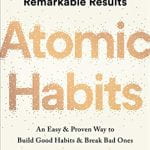 James Clear promises remarkable results with tiny changes in his book The Atomic Habits. The book is filled with amazing stories that really stood out to me. He gives very helpful suggestions on systems that can help us achieve our goals. He also does a good job at showing us why the systems we are using or trying to use are hard to follow through. For example some people want to go to the gym but their system really works against them.
James Clear promises remarkable results with tiny changes in his book The Atomic Habits. The book is filled with amazing stories that really stood out to me. He gives very helpful suggestions on systems that can help us achieve our goals. He also does a good job at showing us why the systems we are using or trying to use are hard to follow through. For example some people want to go to the gym but their system really works against them.
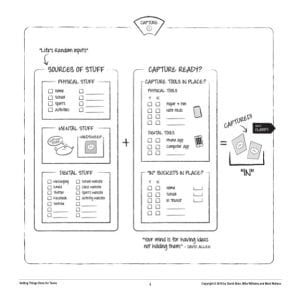

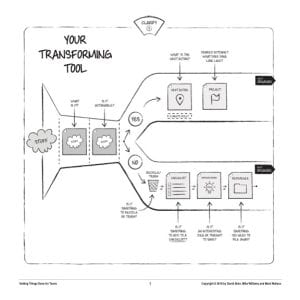
 Actionable
Actionable This step started a week before Disney world and was about planning the trend videos by using storyboarding skills and making prototypes. Starting with storyboarding, I quickly realized that I needed to do more research, because I was planning on doing a Disney food video but I didn’t know where or what food I wanted to use. I am glad I did more research because if you have ever been to Disney World the food and beverages are very imaginative like blue milk!
This step started a week before Disney world and was about planning the trend videos by using storyboarding skills and making prototypes. Starting with storyboarding, I quickly realized that I needed to do more research, because I was planning on doing a Disney food video but I didn’t know where or what food I wanted to use. I am glad I did more research because if you have ever been to Disney World the food and beverages are very imaginative like blue milk!


 Disney was awesome!!! This project was a fun way to express things we experienced at Disney that we want to mention. The video is silly but you still needed to plan it out and think it through in order to make it effective.
Disney was awesome!!! This project was a fun way to express things we experienced at Disney that we want to mention. The video is silly but you still needed to plan it out and think it through in order to make it effective. Keystone 1, a theme book, was our way to discover and record the themes shown in each act of Romeo and Juliet. The power of love and hate, revenge, naïveté of youth, are three main recurring themes that I talked about in my theme book. By reading the lines, I was able to engage with the text and by writing what I thought Shakespeare was trying to communicate, I extended my thinking. I used my Shakespeare sheet to help me understand some of the words.
Keystone 1, a theme book, was our way to discover and record the themes shown in each act of Romeo and Juliet. The power of love and hate, revenge, naïveté of youth, are three main recurring themes that I talked about in my theme book. By reading the lines, I was able to engage with the text and by writing what I thought Shakespeare was trying to communicate, I extended my thinking. I used my Shakespeare sheet to help me understand some of the words. Keystone 2, was part of the theme book that involved watching and connecting modern adaptations of Romeo and Juliet to specific acts, scenes and sometimes specific lines in the original play. Gnomeo and Juliet, Romeo + Juliet, and Warm Bodies were three adaptations I watched for enjoyment and also used to show my understanding of the themes and
Keystone 2, was part of the theme book that involved watching and connecting modern adaptations of Romeo and Juliet to specific acts, scenes and sometimes specific lines in the original play. Gnomeo and Juliet, Romeo + Juliet, and Warm Bodies were three adaptations I watched for enjoyment and also used to show my understanding of the themes and  how they still appeal to modern audiences. One of the themes that was shown in the play and the adaptations was the theme that love and hate are powerful. In the play, the love Juliet had for Romeo made her make a naive decision to trust the Friar and take the poison. In Warm Bodies, the power of love was the cure for the zombies and started to bring them back to life near the end of the movie.
how they still appeal to modern audiences. One of the themes that was shown in the play and the adaptations was the theme that love and hate are powerful. In the play, the love Juliet had for Romeo made her make a naive decision to trust the Friar and take the poison. In Warm Bodies, the power of love was the cure for the zombies and started to bring them back to life near the end of the movie.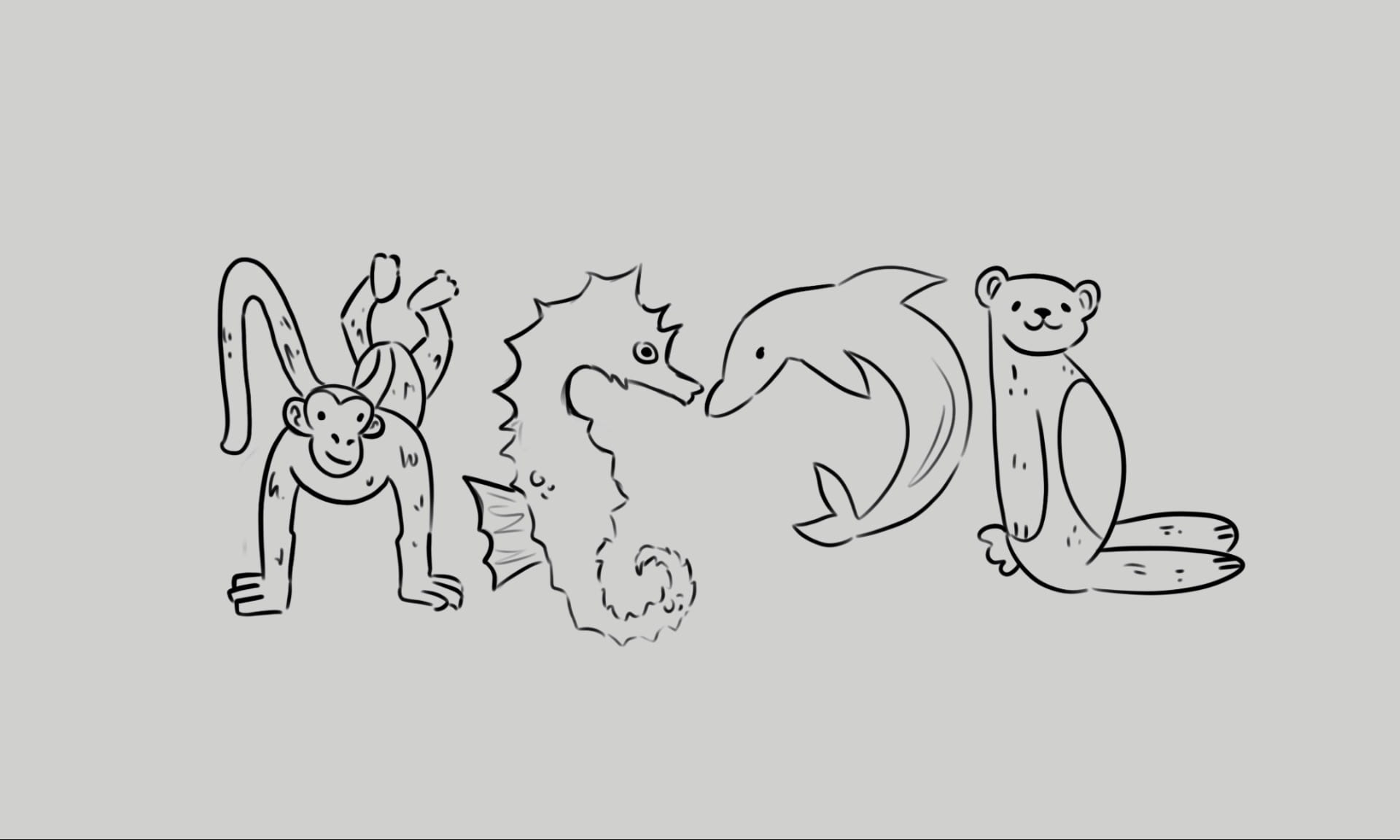
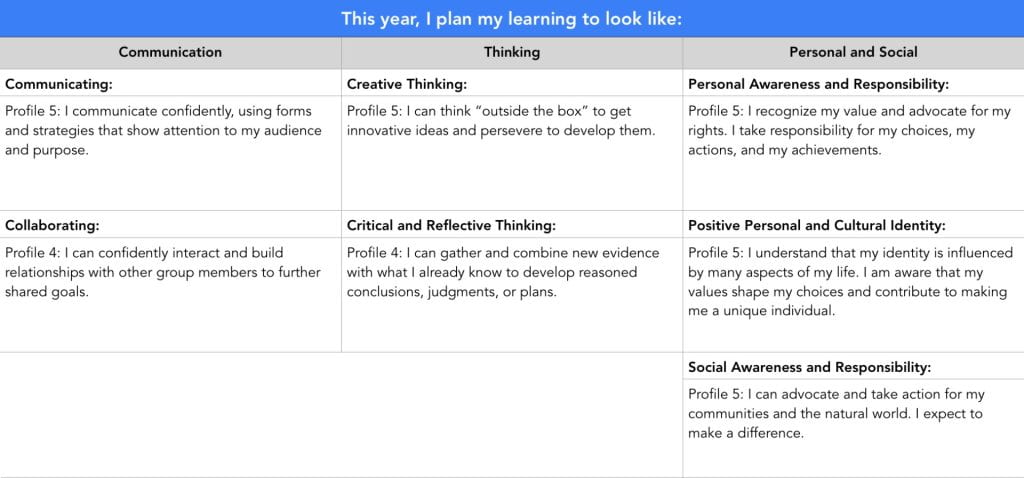
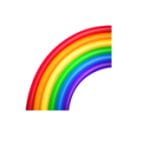 One of my smart goals was to get 3 extending in Humanities this semester. As of this moment, I have earned 4.
One of my smart goals was to get 3 extending in Humanities this semester. As of this moment, I have earned 4. The other smart goal, I accomplished this semester was to learn snowboarding, and be able to complete a run without falling on my face. Sadly, I never completed a run without face planting or losing my snowboard in a ravine, but I was close.
The other smart goal, I accomplished this semester was to learn snowboarding, and be able to complete a run without falling on my face. Sadly, I never completed a run without face planting or losing my snowboard in a ravine, but I was close.

 The main challenge in making our visual was finding the best light source for inside our lantern. This was the part that I thought would be easy but the type of light mattered. Some were not strong enough which meant that the shapes were not projected clearly, and some duplicated the shapes so that they overlapped. In the end, we used the light on an iPhone to cast the perfect light.
The main challenge in making our visual was finding the best light source for inside our lantern. This was the part that I thought would be easy but the type of light mattered. Some were not strong enough which meant that the shapes were not projected clearly, and some duplicated the shapes so that they overlapped. In the end, we used the light on an iPhone to cast the perfect light. There were about eight rooms and each room connected to a theme shown in Avatar that we also see in world history and even in our present. For example, my room theme was militarism and my group and I had to connect the idea of militarism to the Komagata Maru incident. How the Canadian government responded with militarism to the arrival of the Komagata Maru was represented visually in our exhibition room, the Combat Zone. On the night of the exhibition, all of the grades in my room were told to start setting up, as the Grade 9 had a layout and plan in mind. Unfortunately, the student who had created and posted the layout was sick and no one understood what he had drawn. We came up with several ideas and moved props around when we were told that we were in the wrong place. After relocating, we found we were missing two of the tarps needed for the plan. Another challenge was finding the right spot for our specific monument. We needed less light
There were about eight rooms and each room connected to a theme shown in Avatar that we also see in world history and even in our present. For example, my room theme was militarism and my group and I had to connect the idea of militarism to the Komagata Maru incident. How the Canadian government responded with militarism to the arrival of the Komagata Maru was represented visually in our exhibition room, the Combat Zone. On the night of the exhibition, all of the grades in my room were told to start setting up, as the Grade 9 had a layout and plan in mind. Unfortunately, the student who had created and posted the layout was sick and no one understood what he had drawn. We came up with several ideas and moved props around when we were told that we were in the wrong place. After relocating, we found we were missing two of the tarps needed for the plan. Another challenge was finding the right spot for our specific monument. We needed less light






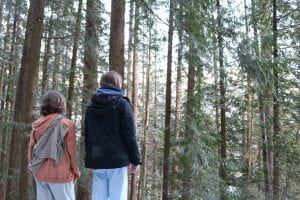

 once they lived here in BC. From a variety of resources we created a chapter card. This character could be based on a real migrant’s story or it could be a fictional character but still based on historical information. At the time I chose Hawaiians for my research topic not knowing it was one of the hardest topics to research. While very interesting, there were limited resources to create a historical fiction story. My character, ‘Iolona, migrated from Hawaii to work with the HBC, then he moved to BC because he would have more civil rights here, and then he joined the gold rush. It was very interesting that the Hawaiians were not given rights in Oregon, but in BC they were treated like “white people”. Other migrants were not treated like that at all. Overall I had to gain more independent research skills to find the information on the Hawaiians and then communicate that information in an interesting way in a character card.
once they lived here in BC. From a variety of resources we created a chapter card. This character could be based on a real migrant’s story or it could be a fictional character but still based on historical information. At the time I chose Hawaiians for my research topic not knowing it was one of the hardest topics to research. While very interesting, there were limited resources to create a historical fiction story. My character, ‘Iolona, migrated from Hawaii to work with the HBC, then he moved to BC because he would have more civil rights here, and then he joined the gold rush. It was very interesting that the Hawaiians were not given rights in Oregon, but in BC they were treated like “white people”. Other migrants were not treated like that at all. Overall I had to gain more independent research skills to find the information on the Hawaiians and then communicate that information in an interesting way in a character card. Our last and final keystone was all about writing a short story based off the character we invented in Keystone 2. We learned about the three act story structure and filled in multiple templates. For the short story we had to consider our audience, make sure our story was historically correct, and craft an interesting story. After creating our first draft, those of us who were done, (6 out of 18) read two stories and gave peer critique on how to improve it for the final draft. I really enjoyed seeing the variety of stories. One of the critiques on my story was on how there wasn’t a conflict in my story. In my story, there WAS both an external conflict and an internal conflict. ‘Iolana lost his equipment in a storm and was debating whether of not to go home for the whole story. BUT the peer feedback made me revise my story so that these conflicts were more obvious. Overall I could have used more time to write my story, but I am proud of what I have written.
Our last and final keystone was all about writing a short story based off the character we invented in Keystone 2. We learned about the three act story structure and filled in multiple templates. For the short story we had to consider our audience, make sure our story was historically correct, and craft an interesting story. After creating our first draft, those of us who were done, (6 out of 18) read two stories and gave peer critique on how to improve it for the final draft. I really enjoyed seeing the variety of stories. One of the critiques on my story was on how there wasn’t a conflict in my story. In my story, there WAS both an external conflict and an internal conflict. ‘Iolana lost his equipment in a storm and was debating whether of not to go home for the whole story. BUT the peer feedback made me revise my story so that these conflicts were more obvious. Overall I could have used more time to write my story, but I am proud of what I have written.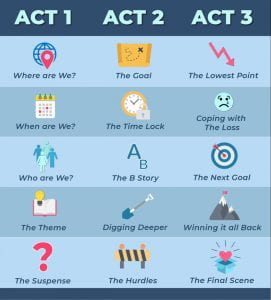
 This last Thursday was the PLP spring exhibition, “💥Impact!”, where we as PLP learners showed our work from throughout the last year to our family and community members. I was put in a group of 9 grade 9’s and we were tasked with the annex AKA the technology room. Our question that drove our room “How do we use technology to deepen our learning?” After several different drafts and a lot of revisions we decided that this is our answer
This last Thursday was the PLP spring exhibition, “💥Impact!”, where we as PLP learners showed our work from throughout the last year to our family and community members. I was put in a group of 9 grade 9’s and we were tasked with the annex AKA the technology room. Our question that drove our room “How do we use technology to deepen our learning?” After several different drafts and a lot of revisions we decided that this is our answer
 Now it was time for us to come up with a room layout. In the drawing we had to include where everyone was standing including all the grade 9 and all 10 of the grade 8 that were showing there work in our room as well. This took many different drafts and tested my teamwork and patience skills, but in the end we created a detailed map.
Now it was time for us to come up with a room layout. In the drawing we had to include where everyone was standing including all the grade 9 and all 10 of the grade 8 that were showing there work in our room as well. This took many different drafts and tested my teamwork and patience skills, but in the end we created a detailed map. The first milestone was to choose a product or service to sell. I handed in three options of something I was interested in selling: cookies, bracelets and babysitting. Out of the three choices, I decided to babysit. I then created a spreadsheet that showed my expenses, time, start-up costs and effect on the environment for one five-hour babysitting job.
The first milestone was to choose a product or service to sell. I handed in three options of something I was interested in selling: cookies, bracelets and babysitting. Out of the three choices, I decided to babysit. I then created a spreadsheet that showed my expenses, time, start-up costs and effect on the environment for one five-hour babysitting job. Using the spreadsheet and the knowledge I gained through the workbooks, I created a linear equation that would predict my earnings for any amount of time. Using that equation, I was able to use the Desmos website to graph my earnings for not only the next year but also how much I would make in a day, week, month and in my life. I found out that I would make more if I did a minimum wage job or was a part time teacher.
Using the spreadsheet and the knowledge I gained through the workbooks, I created a linear equation that would predict my earnings for any amount of time. Using that equation, I was able to use the Desmos website to graph my earnings for not only the next year but also how much I would make in a day, week, month and in my life. I found out that I would make more if I did a minimum wage job or was a part time teacher. In my spreadsheet, I accounted for all of the time, materials and equipment, and included that in my overall cost. I also calculated the effect of the environment from the exhaust from the car that I used to get to the babysitting site. I believe I showed an accomplished and detailed documentation showing my understanding of this curricular competency.
In my spreadsheet, I accounted for all of the time, materials and equipment, and included that in my overall cost. I also calculated the effect of the environment from the exhaust from the car that I used to get to the babysitting site. I believe I showed an accomplished and detailed documentation showing my understanding of this curricular competency. I believe I showed an understanding of this curricular competency. I made a linear equation that properly determines my profit for various amounts of time. Then using this equation I was able to create seven graphs that showed those earnings over time. In my final video, these graphs were labeled and explained in a logical way.
I believe I showed an understanding of this curricular competency. I made a linear equation that properly determines my profit for various amounts of time. Then using this equation I was able to create seven graphs that showed those earnings over time. In my final video, these graphs were labeled and explained in a logical way. I was able to connect mathematical concepts to a business that is of personal interest to me. I compared my business to a minimum wage job and to my mother’s part time teaching position.
I was able to connect mathematical concepts to a business that is of personal interest to me. I compared my business to a minimum wage job and to my mother’s part time teaching position. I also considered the cost of living and the value of my time, along with the sustainability on the environment to decide whether the job is worth it. In the end, I decided that I would not be able to live in Vancouver with the amount I earned and it would be better to think about another possible career. The only thing I would have done differently is consider different levels of jobs.
I also considered the cost of living and the value of my time, along with the sustainability on the environment to decide whether the job is worth it. In the end, I decided that I would not be able to live in Vancouver with the amount I earned and it would be better to think about another possible career. The only thing I would have done differently is consider different levels of jobs.